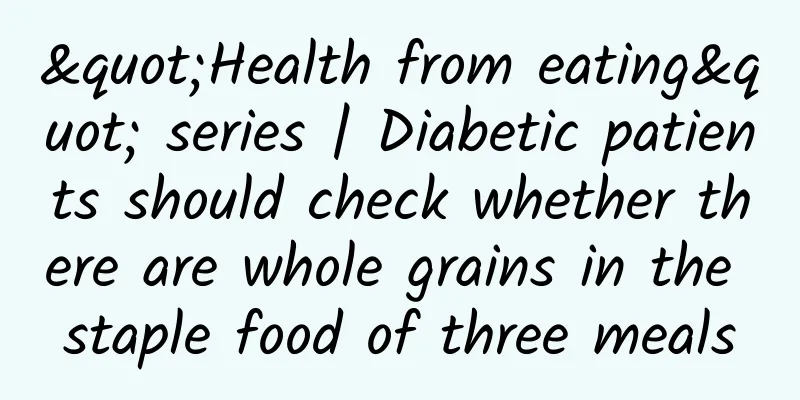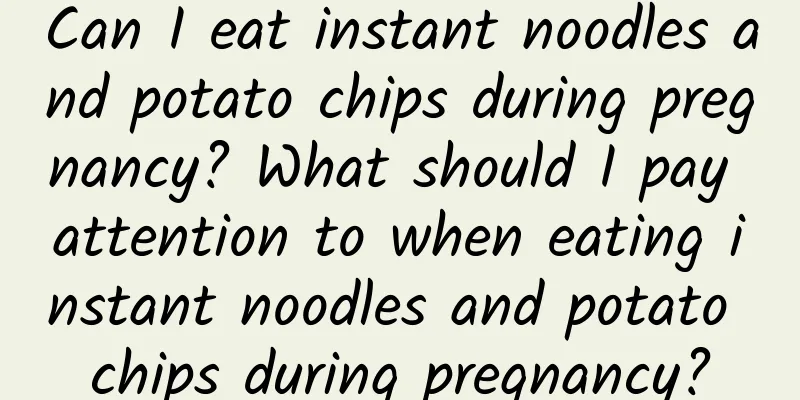"Health from eating" series | Diabetic patients should check whether there are whole grains in the staple food of three meals

|
Insufficient whole grain intake is one of the main causes of diabetes. In the endocrinology clinic, I usually look at the three meals of diabetic patients to understand their diet. Unfortunately, I rarely see whole grains in these photos of patients. Many people with diabetes eat less whole grains In 2021, Li Ying, Sun Changhao and other scholars from Harbin Medical University published an article titled "The Future of Nutritional Prevention and Treatment of Diabetes in China" in the journal Cell Metabolism, stating that one of the main dietary risk factors for diabetes in my country is the low intake of whole grains and excessive intake of refined grains. At present, there is a lot of epidemiological research evidence that whole grains have a positive effect on the prevention and control of type 2 diabetes. Several prospective studies have shown that an average daily intake of 27-30 grams of whole grains can significantly reduce the risk of type 2 diabetes. The results of a "dose-response" meta-analysis of cohort studies showed that when a total of 60-90 grams of whole grains are consumed 2-3 times a day, the prevalence of type 2 diabetes can be reduced by up to 32%. Other studies have focused on the role of whole grains in long-term intervention in patients with type 2 diabetes. One study showed that patients with type 2 diabetes who insisted on consuming 100 grams of whole grain foods had significantly lower postprandial blood sugar levels and significantly increased insulin sensitivity compared with the control group after one month. A meta-analysis of 14 randomized controlled trials (RCTs) and 2 uncontrolled observational studies showed that compared with a refined grain control diet, regular intake of whole grain foods (50-100 grams/day for 1-4 weeks) in patients with type 2 diabetes significantly reduced glycated hemoglobin and fasting blood sugar levels. Whole grains are a good staple food for people with diabetes Many patients have just developed impaired glucose tolerance or diabetes, and are "terrified of carbohydrates". They restrict the amount of staple foods too strictly, which eventually leads to obvious hypoglycemia, general fatigue, and inability to work, lead a normal life, and exercise. Some people only eat refined grains, which is not good either. The palpitation and hunger caused by long-term consumption of refined grains is very common in clinical practice. Type 2 diabetes and obesity are both "hidden hunger" problems. Clinically, the vast majority of patients have obvious hunger, and even palpitations and tremors may occur when blood sugar levels are normal. Therefore, I often recommend whole grains to diabetic patients. Whole grain rice is rich in dietary fiber and has a sense of fullness. There is no need to strictly limit the intake like refined carbohydrates, nor is there a need to emphasize refined carbohydrates after eating. The correct way to consume whole grains is to eat them from the beginning of the meal until you feel full. This way you can eat enough and keep your blood sugar within the normal range after the meal. After listening to my advice, some patients went home and tried it. They reported that after adjusting to whole grain rice, the hospital test report showed that fasting and postprandial blood sugar levels improved significantly, high insulin levels decreased, and glycosylated hemoglobin gradually reached the standard. The feeling of panic and hunger disappeared, and the sleep and bowel movements also improved, and they were full of energy. Teaching diabetics to cook whole grain meals Some people say that whole grains are not as delicious as refined white rice and flour, and they cannot be eaten. In fact, this is due to the wrong way they are cooked. I recommend you to do this: Ingredients include whole grain rice such as brown rice, buckwheat kernels, black rice, millet, rhubarb rice, oats, highland barley, coix seed, sorghum rice, quinoa, etc. Beans include red beans, mung beans, chickpeas, soybeans, peas, edamame, kidney beans, black-eyed peas, lentils, etc. Beans should be soaked in a refrigerator at 4 degrees Celsius for 12-24 hours before use. Choose 1-2 kinds of whole grain rice and beans for a meal. It is recommended to use an electric pressure cooker to cook. The whole grain rice is soft and easy to digest, and its nutritional value is better than refined grains. It is recommended that diabetic patients choose a variety of whole grains and try to steam rice with whole grains instead of grinding or cooking them into porridge, which is more conducive to stable blood sugar control. Because the increase of saturated fatty acids and trans fatty acids will increase insulin resistance, excessive intake of dietary cholesterol should be controlled, and the intake of saturated fatty acids and trans fatty acids should be limited to avoid interfering with the good effects of whole grains. Type 2 diabetes is a lifestyle disease, and dietary intervention is the first choice for preventing and treating type 2 diabetes. Diabetic patients may wish to start improving by eating whole grain staple foods at every meal. If conditions permit, it is recommended that diabetics take photos and record their three meals every day. When you go to the hospital for outpatient treatment, you can ask an endocrinologist to "check" you. The presence and amount of whole grains in your three meals is the key to discovering problems. (The author Liu Mingming is an associate chief physician in the Department of Endocrinology at Shenzhen Second People's Hospital. Qiao Jingfang from the Whole Grain Channel of People's Daily Health Client also contributed to this article.) |
>>: Are the elderly more likely to suffer from malnutrition? Eating this way is healthier
Recommend
Five parts of the body that have odors make women embarrassed
Sweat from certain parts of the body produces unp...
Anger and rage at 8 weeks of pregnancy lead to fetal arrest
We all know that women need to be very careful to...
How do women train their fists to have explosive power?
Anyone who has seen the Victoria's Secret Ang...
What preparations should you make before pregnancy?
During the ten months of pregnancy, the baby'...
#千IP创科学普# How to identify a stroke
How to recognize a stroke The cartoon popularizes...
Can I have sex before my period?
Menstruation is a normal physiological cycle for ...
What are the benefits of dating?
Love is a beautiful thing, and everyone wants to ...
How should babies with milk protein allergy add complementary food? What is the best food for babies with milk protein allergy?
How to add complementary food to babies who are a...
I had sex 5 times in 20 days after my cesarean section
After a caesarean section, women's bodies are...
What is the latest treatment for ovarian cysts?
I believe many of my friends have heard of ovaria...
How long after laparoscopic salpingectomy should I have sex?
Diseases in the uterus and ovaries mean that preg...
What are the bad effects of staying up late and working overtime on your health?
With the advent of the information age, the pace ...
Will excessive humidity affect menstruation?
In traditional Chinese medicine, dampness in the ...
Why do we need to heat up the salt when curing bacon? What should we do if the bacon is too salty?
Bacon is usually pickled in winter, when everyone...
Ten days after the abortion, the bleeding is not painful
Women generally have to endure great pain during ...









